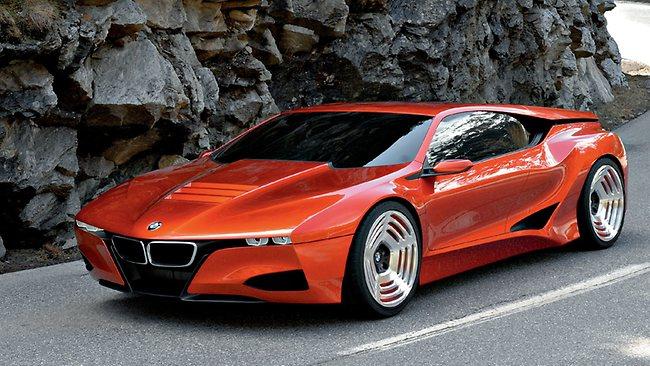Reinventing the wheels
CAR manufacturers are in playback mode. Take a good idea from yesteryear and make it new again.

I HAVE an unaccountable memory blindspot when it comes to some movies, which is why I've traipsed to the cinema on several occasions to see Duel, the early Steven Spielberg thriller, determined to fill the gap in my films-with-cars CV.
After a few moments, the veil of selective amnesia drops and reality dawns: I have seen it before. More than once, in fact. And with its single-minded man-pursued-by-truck plotline, it doesn't really bear another viewing. Which is possibly why I'd forgotten it in the first place.
More often than not, though, Hollywood itself is guilty of unnecessary repetition. When it's not flogging the last vestiges of life out of an over-worn idea with Rocky XXVII, it's scouring the back catalogue for remake potential. The patchy record of these regurgitations is no deterrent and even the most venerated are guilty. Alfred Hitchcock made the same film, The Man Who Knew Too Much, twice. Once in black and white with a British cast, then 20 years later in colour with Americans.
Car execs are as overdrawn at the ideas bank as movie moguls, so in the 1990s the industry jumped on the remake bandwagon and now shows all the signs of addiction. Volkswagen's reborn Beetle is generally regarded as the first. It had nothing in common with the original beyond its Disney-esque design, but it struck a sentimental chord with US ex-hippies. Retro was up and running. It wasn't long before other monochrome post-war machines were recast in colour. Soon there was a New Mini and a new Fiat 500, their poverty-pack origins morphed into customisable accessories for the fashionably cashed-up.
Of course, not every brand has a people's car ripe for resurrection. But other motoring genres soon realised the potential of the idea. By the early noughties, they were all at it. By then, America's Big Three were desperate for anything that reminded buyers of Happy Days, so they returned to muscles and fins. In 2002, after a five-year gap, Ford revived the Thunderbird nameplate in a retro-shape. It didn't last but it kicked off a wave of nostalgia.
For its next Mustang, Ford stopped evolving the shape and made a modern echo of the original. General Motors saw the writing on the wall - American Graffiti? - and made a Camaro based on underpinnings from the Holden Commodore, while Dodge revived the Challenger and Charger. There were even cars, such as Chrysler's PT Cruiser and 300C, that had no antecedents as such but fed an appetite for pastiche Americana. Between them, these vehicles attract more than a quarter of a million buyers each year in the US alone. So retro has a rosy future and one measure of its potential comes from Toyota. In 2006, it showed that no motoring segment is nostalgia-proof by producing the FJ Cruiser, a Prado in early-offroader fancy dress. After success stateside, Toyota began importing it here.
Who could resist Return to Snowy Mountains Scheme?
Now the floodgates have opened and the action has moved upmarket. If you can't repeat your motorsport success from the past in today's categories, simply reprise your former hero model for showroom consumption. So for its 100th anniversary year Ford wanted to remind the world that it once made a supercar. The GT40 was developed in a fit of corporate pique after the Blue Oval was rebuffed in a bid for Ferrari. It set out to beat the Italians at their favourite event, Le Mans, and took the chequered flag four times in a row from 1966 to end Ferrari's six-on-the-trot winning streak. The reborn car, known as GT, set off another retro trend: the homage.
All the premium brands are at it. Four years ago, BMW wheeled out the M1 Homage, a tribute to the motorsport wedge that made its reputation in the 1970s. It blossomed into BMW's M tuning division, which produces hotted-up versions of its mainstream cars. BMW could well return to supercars with this study as its starting point.
Audi started the clock ticking on its recent period with the Quattro of 1980, which stormed into rallying with revolutionary all-wheel drive to win two championships before turning its attention to other motorsport categories. For its 30th anniversary, it produced a showcar that honoured the original angular coupe in its proportions and lines. Renault enjoyed rallying success earlier, in the 1960s and '70s, with its Alpine sub-brand and celebrated the half-century since the A110 was born at the Monaco Grand Prix in May. The carbon fibre Alpine A110-50 mirrors the lightweight Berlinette in spirit and myriad details. It raced around the city circuit ahead of the Formula 1 cars in a thinly conceiled declaration of intent to breath life back into the badge.
Mercedes has also chalked up a few laps when it comes to retro supercars. The SLS is a half-million dollar coupe that cashes in on the unforgettable feature of the original SL300 from the 1950s: its gullwing doors. If you can't afford the collectible classic, an SLS looks cheap.
The latest turn in this trend requires serious money so only Rock Gods, or their financial peers, need apply. If your favourite classic hasn't had the repeat treatment yet, commission one. Eric Clapton has owned three examples of the Ferrari 512 BB, a stunning 5L boxer 12-cylinder coupe from the 1970s. The SP12 EC has only eight cylinders as it's based on the 458 Italia, Ferrari's junior supercar, but it overcompensates with style. A one-off bit of bespoke retro, it would have cost millions. It's a remake I'd pay to see.


